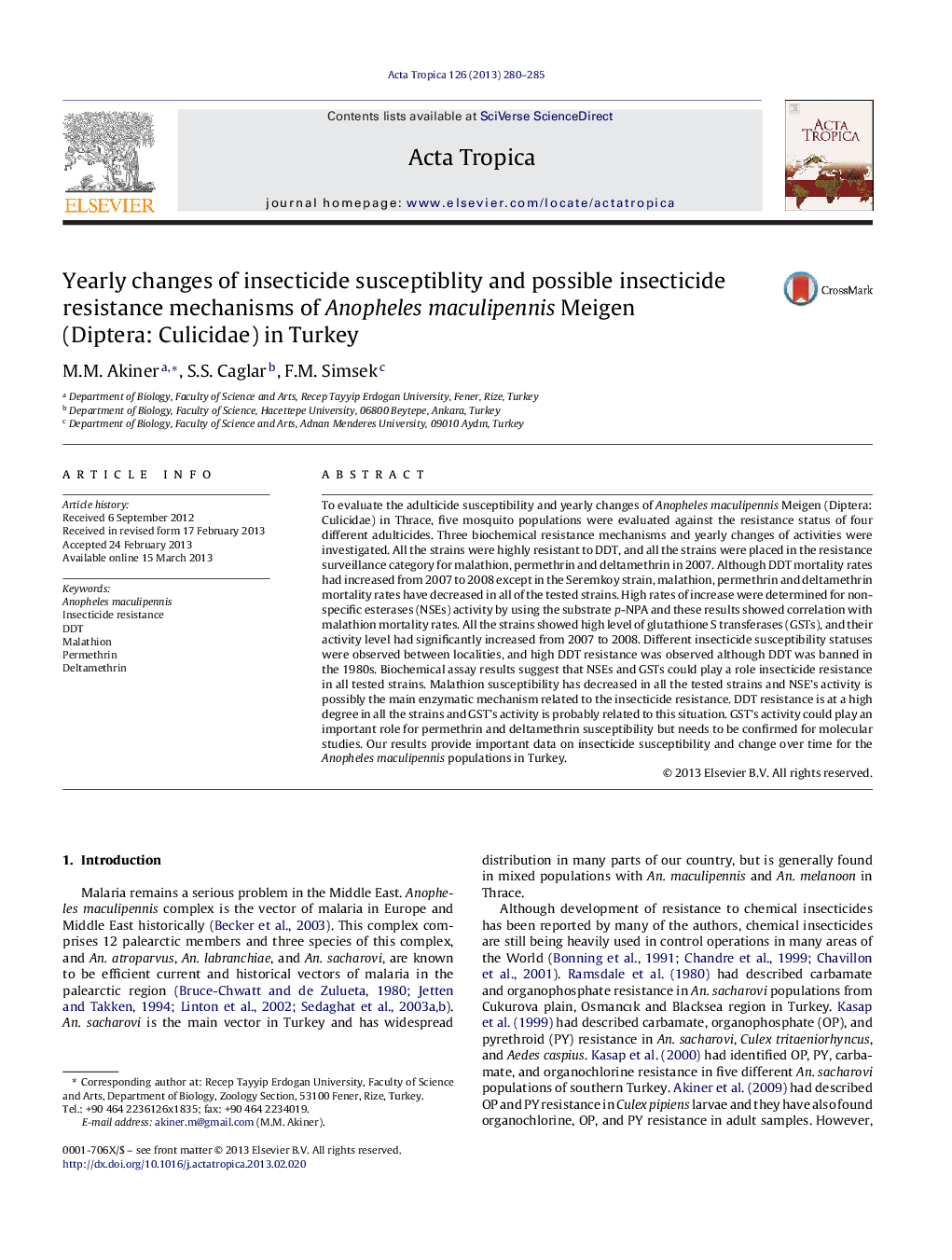| Article ID | Journal | Published Year | Pages | File Type |
|---|---|---|---|---|
| 3393854 | Acta Tropica | 2013 | 6 Pages |
•Agricultural use of insecticides is important for development of the insecticide resistance and resistance mechanisms.•Insecticide resistance monitoring in the area is a key point for efficient and effective mosquito control.•Susceptibility of all populations, pyrethroid and organophosphate to malaria due to DDT resistance is still an important point for the state.•Main functional mechanisms of insecticide resistance are GSTs and NSEs activity levels at these localities.
To evaluate the adulticide susceptibility and yearly changes of Anopheles maculipennis Meigen (Diptera: Culicidae) in Thrace, five mosquito populations were evaluated against the resistance status of four different adulticides. Three biochemical resistance mechanisms and yearly changes of activities were investigated. All the strains were highly resistant to DDT, and all the strains were placed in the resistance surveillance category for malathion, permethrin and deltamethrin in 2007. Although DDT mortality rates had increased from 2007 to 2008 except in the Seremkoy strain, malathion, permethrin and deltamethrin mortality rates have decreased in all of the tested strains. High rates of increase were determined for nonspecific esterases (NSEs) activity by using the substrate p-NPA and these results showed correlation with malathion mortality rates. All the strains showed high level of glutathione S transferases (GSTs), and their activity level had significantly increased from 2007 to 2008. Different insecticide susceptibility statuses were observed between localities, and high DDT resistance was observed although DDT was banned in the 1980s. Biochemical assay results suggest that NSEs and GSTs could play a role insecticide resistance in all tested strains. Malathion susceptibility has decreased in all the tested strains and NSE's activity is possibly the main enzymatic mechanism related to the insecticide resistance. DDT resistance is at a high degree in all the strains and GST's activity is probably related to this situation. GST's activity could play an important role for permethrin and deltamethrin susceptibility but needs to be confirmed for molecular studies. Our results provide important data on insecticide susceptibility and change over time for the Anopheles maculipennis populations in Turkey.
Graphical abstractFigure optionsDownload full-size imageDownload as PowerPoint slide
